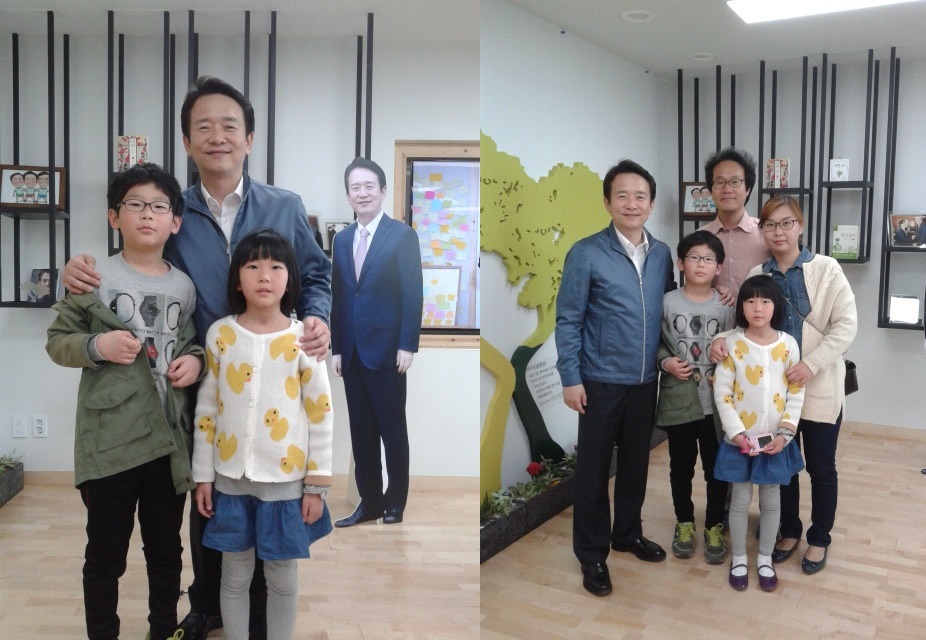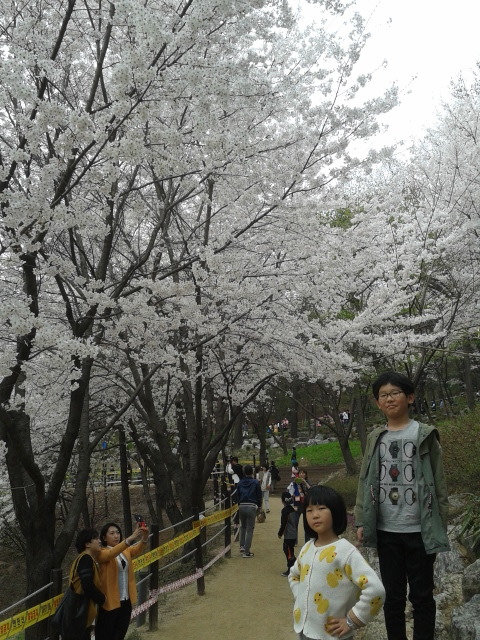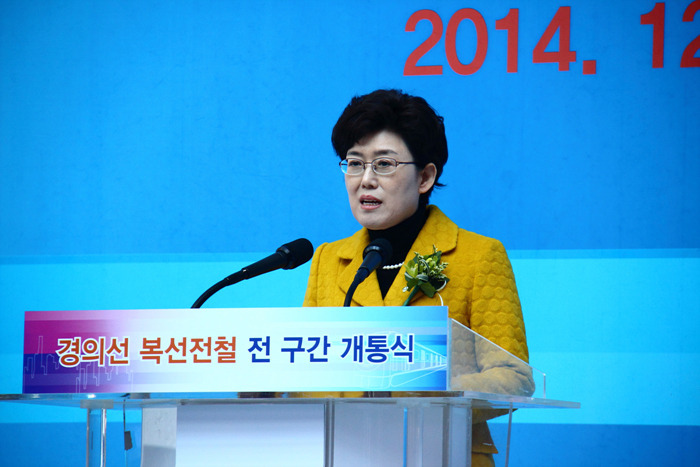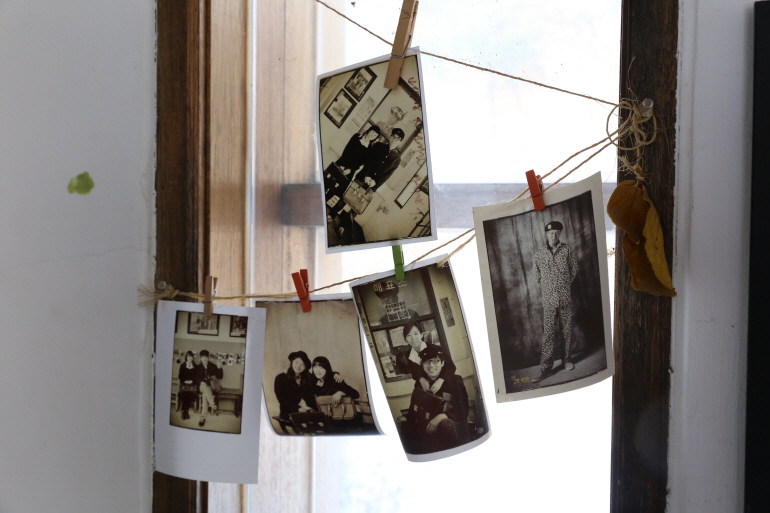
#. Closed station and closed businesses
The old Gapyeong Station closed when the Gyeongchun Line ceased operations in December 2010. There was some speculation that the station would be used as a tourism attraction, but soon it degenerated to being an eye sore in the city.
The business district that had evolved through the 70-year history of the station quickly collapsed, and people started to move out. Nearby merchants have been lamenting this situation for four years by now.
“I used to run a grocery store here before the station closed, and business was good, bringing in about KRW 1.5 million a day. Since the station closed, however, the number of customers has dropped sharply. I changed the store into a restaurant, but business is still quite bad. House and land prices fell quite significantly, and many stores closed down.”

#. Precious KRW 10 billion to revive Gapyeong
It is no wonder that a plan to utilize the old station has been always included on the list of pending issues of Gapyeong County.
The county has considered various options from various angles, including an outlet mall or a wedding shop, to revive the business district, but none seemed feasible. Financing was the most pressing concern.
In that respect, the NEXT Gyeonggi Creation Audition was a grand opportunity and hope for Gapyeong County. The county’s Vice Mayor, Kim Gwan-su, who presented at the audition, drew attention by saying, “Gapyeong lags behind all other areas in Gyeonggi Province. Gapyeong is desperate.”

Their earnest prayers must have reached the heavens. Gapyeong County won the Good Morning Award, the grand prize, with prize money of KRW 10 billion.
#. Huge transformation of closed railway station: Gapyeong Music Village
“We will make Gapyeong a place where music flows 24/7 as the first music city in Korea.”
Gapyeong County’s Vice Mayor Kim Gwan-su made the preceding statement during an interview with media after the award ceremony. Let’s take a look at the Music Village project, which envisions the future of Gapyeong, and picture how Gapyeong will be transformed through the project.

This is an artist’s aerial concept drawing of the Gapyeong Music Village. The site of the currently abandoned Gapyeong Station will be transformed into this. The Music Village, to be established on a site of 38,000 square meters, will consists of a music zone, business zone, and food zone.
Let’s take a look at the music zone first. This zone, which will house a music center, studios, an education center, a line-shaped stage, and a club, is space for musicians to create, perform and share their music with audiences.

This is the old Gapyeong Station building.

The old station will become a music center after a renovation.
The music center, a 3-story building with a stepped loop-like structure, will feature an exhibition hall, a stage, waiting rooms, multi-purpose rooms, a movie theater, and an outdoor theater. Located at the heart of the Music Village, this center will feature supporting facilities and also as cultural facilities for local communities.
This is a view of the square as seen from the observatory on the 3rd floor of the music center.

#. Size-adjustable, railed stages
Do you see those long wooden panels in the middle? They are part of a small concert stage. It is interesting to note that those panels differing in size are equipped with a rail system.
The rail system enables the movement of the stage as well as the adjustment of its size depending on the scale of a concert. This line-shaped stage, which is to be built on the existing platform, will remind people of the fact that the place was once a railway station.

This place is the upper right bird’s eye view.
It will be transformed into this.

#. Workspace for musicians: Living/work units have work space on 1st floor and living space on 2nd floor
These are living/work units into which musicians will move. Following the shape of a container, a total of 18 units in which musicians can work on music and reside in separate spaces will be built by applying the concept of a residency program, which is often used in artistic circles.
Musicians will work on their music on the first floor, and live on the second floor. This must be good news for many talented musicians who are having a hard time finding work spaces.
Next to the units, a joint studio and the education center will be built to allow musicians to live here and work together as well as to enable the public to participate in music programs.

This space, which was used as a fertilizer storehouse for 60 years, will be renovated as a club.

#. Enjoy performance from terrace of guest room: Container Hotel
The business zone will feature a container hotel and a convention center. The 4-story container hotel will offer affordable accommodations to visitors who want to stay over while enjoying the musical experience.
It is possible to enjoy all the performances that will take place in the Music Village from terraces located at the front of each guest room. For members of bike clubs, the back of the container hotel will be structured to accommodate road bikes.

In order to help farming families, who account for 18% of Gapyeong County’s residents, stores, marketplaces, and restaurants will also be built to support fresh local produce. The food zone is expected to raise farm income and promote agricultural development in Gapyeong County through the sale of local produce and the staging of farm events.
Food trucks will also operate near the platform.

#. Riverside Song Festival => Jarasum International Jazz Festival => Music Village
Gapyeong Country seeks to realize the two goals of reinvigorating the local economy and improving the city image through the establishment of the Music Village. The county expects that the Music Village will increase the number of tourists from 1.7 million last year to 2.8 million by 2019, generate economic effects of KRW 10 billion, and create 525 jobs.
A cost-benefit analysis revealed a ratio of 1.70, confirming that the project is viable.

Gapyeong County, which hosted the Riverside Song Festival in the past, now holds the Jarasum International Jazz Festival every year, drawing 270,000 visitors.
Park Jae-geun, Team Leader in the Planning and Audit Division of Gapyeong County, said, “The number of tourists has increased every year because there are many tourist attractions such as the Jarasum camp ground. A bigger synergy effect is expected from the Gyeongchun Rail Bike that is set to open this April and the Bukhangang Cycle Path.”
http://ggholic.tistory.com/9524



































 Have you decided? The cherry blossom road at the Gyeonggi Provincial Government Complex is very beautiful, so it would be great to check it out and catch the spring breeze. I hope you can enjoy a warm spring day outing at the cherry blossom Festivals in Gyeonggi Province.
Have you decided? The cherry blossom road at the Gyeonggi Provincial Government Complex is very beautiful, so it would be great to check it out and catch the spring breeze. I hope you can enjoy a warm spring day outing at the cherry blossom Festivals in Gyeonggi Province.



















































































